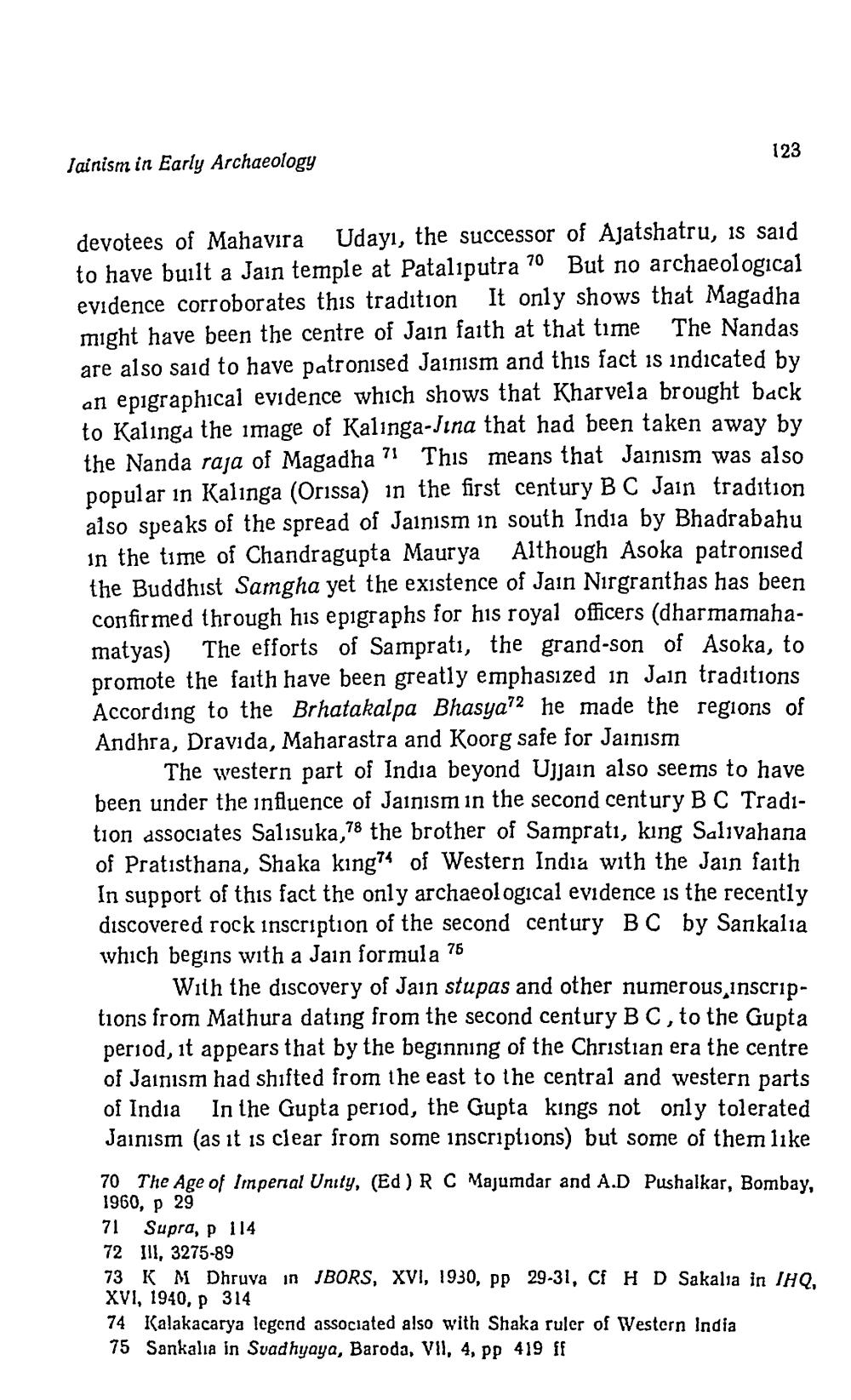________________
Jainism in Early Archaeology
123
70
devotees of Mahavira Udayı, the successor of Ajatshatru, is said to have built a Jain temple at Pataliputra But no archaeological evidence corroborates this tradition It only shows that Magadha The Nandas might have been the centre of Jain faith at that time are also said to have patronised Jainism and this fact is indicated by an epigraphical evidence which shows that Kharvela brought back to Kalinga the image of Kalinga-Jina that had been taken away by the Nanda raja of Magadha " This means that Jainism was also popular in Kalinga (Orissa) in the first century BC Jain tradition also speaks of the spread of Jainism in south India by Bhadrabahu in the time of Chandragupta Maurya Although Asoka patronised the Buddhist Samgha yet the existence of Jain Nirgranthas has been confirmed through his epigraphs for his royal officers (dharmamahamatyas) The efforts of Sampratı, the grand-son of Asoka, to promote the faith have been greatly emphasized in Jain traditions According to the Brhatakalpa Bhasya12 he made the regions of Andhra, Dravida, Maharastra and Koorg safe for Jainism
The western part of India beyond Ujjain also seems to have been under the influence of Jainism in the second century B C Tradıtion associates Salisuka,78 the brother of Sampratı, king Salivahana of Pratisthana, Shaka king" of Western India with the Jain faith In support of this fact the only archaeological evidence is the recently discovered rock inscription of the second century BC by Sankalia which begins with a Jain formula 75
With the discovery of Jain stupas and other numerous inscriptions from Mathura dating from the second century BC, to the Gupta period, it appears that by the beginning of the Christian era the centre of Jainism had shifted from the east to the central and western parts of India In the Gupta period, the Gupta kings not only tolerated Jainism (as it is clear from some inscriptions) but some of them like
70 The Age of Imperial Unity, (Ed) R C Majumdar and A.D Pushalkar, Bombay, 1960, p 29
71
Supra, p 114
72 III, 3275-89
73 KM Dhruva in JBORS, XVI, 1930, pp 29-31, Cf H D Sakalia in IHQ, XVI, 1940, p 314
74 Kalakacarya legend associated also with Shaka ruler of Western India
75 Sankalia in Svadhyaya, Baroda, VII, 4, pp 419 ff




